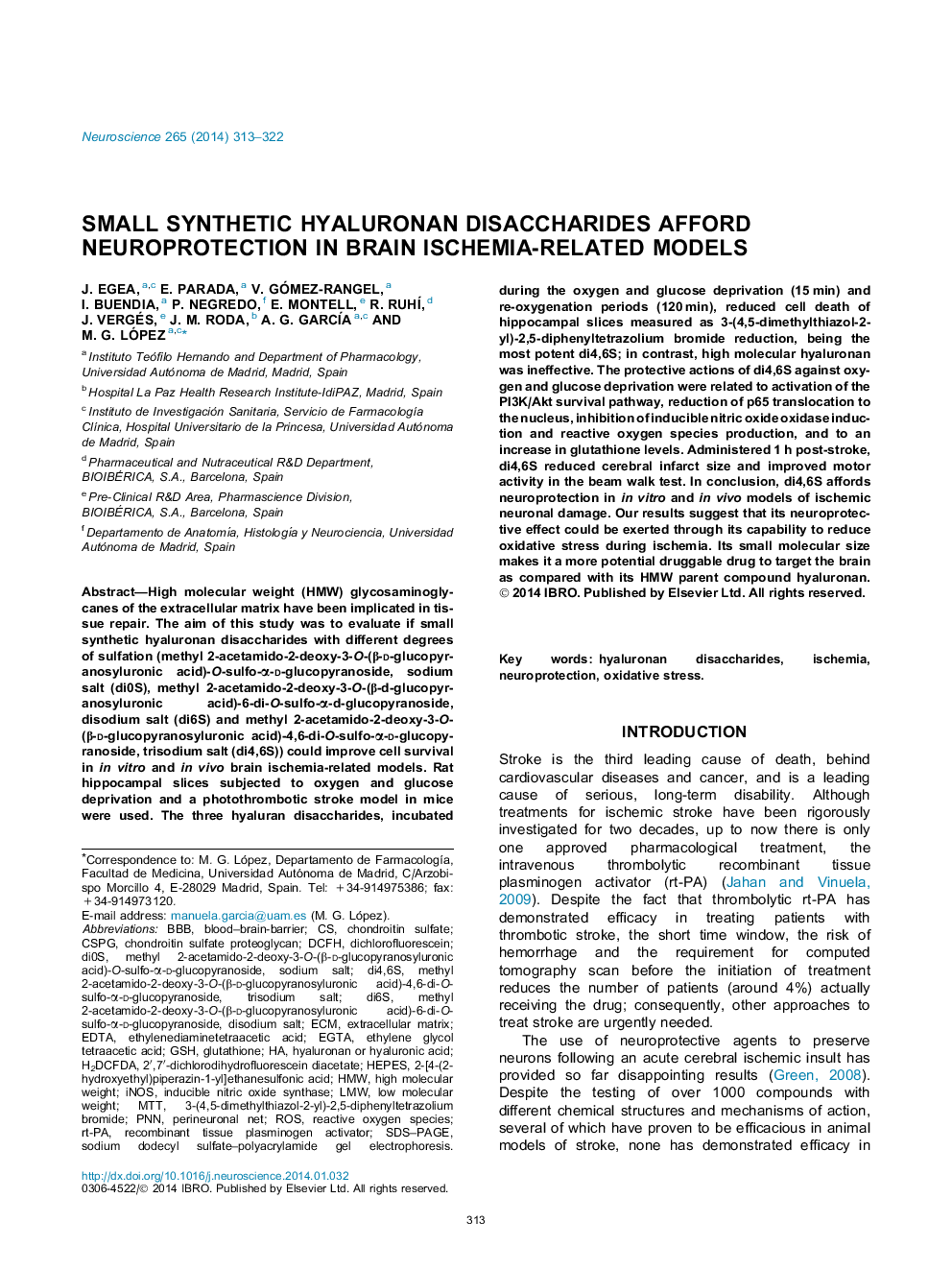| کد مقاله | کد نشریه | سال انتشار | مقاله انگلیسی | نسخه تمام متن |
|---|---|---|---|---|
| 6274042 | 1614811 | 2014 | 10 صفحه PDF | دانلود رایگان |

- Protection by synthetic sulfated disaccharides of hyaluronan in brain ischemia-related models.
- The disaccharide di4,6S, given post-stroke, reduces infarct volume and improves neurological decline.
- Protection involves activation of PI3K/Akt, reduction of oxidative stress and inhibition of NFκB.
High molecular weight (HMW) glycosaminoglycanes of the extracellular matrix have been implicated in tissue repair. The aim of this study was to evaluate if small synthetic hyaluronan disaccharides with different degrees of sulfation (methyl 2-acetamido-2-deoxy-3-O-(β-d-glucopyranosyluronic acid)-O-sulfo-α-d-glucopyranoside, sodium salt (di0S), methyl 2-acetamido-2-deoxy-3-O-(β-d-glucopyranosyluronic acid)-6-di-O-sulfo-α-d-glucopyranoside, disodium salt (di6S) and methyl 2-acetamido-2-deoxy-3-O-(β-d-glucopyranosyluronic acid)-4,6-di-O-sulfo-α-d-glucopyranoside, trisodium salt (di4,6S)) could improve cell survival in in vitro and in vivo brain ischemia-related models. Rat hippocampal slices subjected to oxygen and glucose deprivation and a photothrombotic stroke model in mice were used. The three hyaluran disaccharides, incubated during the oxygen and glucose deprivation (15 min) and re-oxygenation periods (120 min), reduced cell death of hippocampal slices measured as 3-(4,5-dimethylthiazol-2-yl)-2,5-diphenyltetrazolium bromide reduction, being the most potent di4,6S; in contrast, high molecular hyaluronan was ineffective. The protective actions of di4,6S against oxygen and glucose deprivation were related to activation of the PI3K/Akt survival pathway, reduction of p65 translocation to the nucleus, inhibition of inducible nitric oxide oxidase induction and reactive oxygen species production, and to an increase in glutathione levels. Administered 1 h post-stroke, di4,6S reduced cerebral infarct size and improved motor activity in the beam walk test. In conclusion, di4,6S affords neuroprotection in in vitro and in vivo models of ischemic neuronal damage. Our results suggest that its neuroprotective effect could be exerted through its capability to reduce oxidative stress during ischemia. Its small molecular size makes it a more potential druggable drug to target the brain as compared with its HMW parent compound hyaluronan.
Journal: Neuroscience - Volume 265, 18 April 2014, Pages 313-322